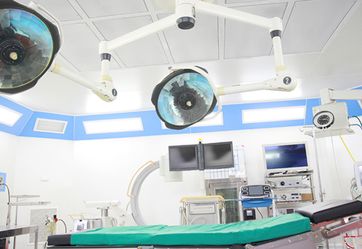Bariatric surgery yields liver benefits
The rates of fibrosis, lobular inflammation and hepatocellular ballooning all decreased after adults underwent sleeve gastrectomy, according to findings published in Metabolism.

“Contrary to the current paradigm, diabetes reversal in most patients, as well as hypertension, dyslipidemia and liver fibrosis remission, strongly indicate that these diseases are reversible (even before weight loss) and not necessarily progressive,” Jorge Joven, MD, PhD, professor in the department of medicine and surgery at the Universitat Rovira i Virgili in and director of the biomedical research unit at Hospital Sant Joan de Reus in Reus, Spain, told Endocrine Today. “[Laparoscopic sleeve gastrectomy] therefore should be indicated in patients with more moderate obesity and ominous course of other comorbidities, especially diabetes.”
Joven and colleagues conducted a prospective longitudinal study comparing steatosis grade, lobular inflammation, hepatocellular ballooning and the presence of fibrosis before and after procedures of laparoscopic sleeve gastrectomy. The surgery was conducted in 436 participants with severe obesity who were initially recruited from the Hospital Universitari de Sant Joan de Reus for the study. Among the total study population, 191 participants did not have nonalcoholic steatohepatitis (NASH; mean age, 46 years; 78.5% women), 151 had probable NASH (mean age, 49 years; 72.8% women) and 94 had definite NASH (mean age, 48 years; 73.4% women). A year after surgery, blood samples were collected and liver biopsies were performed in 120 adults from the total study population.
Among the 120 participants with preoperative and postoperative measures, the average BMI in the year after surgery was 31.2 kg/m2 compared with a BMI of 46.4 kg/m2 before the procedure (P < .001). Triglyceride (0.9 mmol/L vs. 1.5 mmol/L), glucose (4.7 mmol/mol vs. 7 mmol/L) and insulin levels (39.6 pmol/L vs. 100.8 pmol/L) were also reduced after surgery (P < .001 for all).

Before surgery, 20.8% of the cohort had a steatosis grade of less than 5%, but this number rose to 96.6% once surgery was performed (P < .001). A higher percentage of participants also had no foci for lobular inflammation after surgery compared with before surgery (81.6% vs. 20.8%; P < .001). Hepatocellular ballooning was observed in 59.2% of the participants before surgery and that number was lowered to 18.4% in the following year (P < .001). Lastly, preoperative fibrosis was present in 83.4% of the participants compared with a rate of 54.2% in postoperative fibrosis (P < .001).
“Our study suggests that [laparoscopic sleeve gastrectomy] improves the histology and liver function of patients with morbid obesity. ... These data encourage the use of this procedure as a therapeutic option to improve, or resolve, obesity-associated liver disease,” the researchers wrote, adding that more long-term outcomes are also promising. “Preliminary results in some of our patients that have been followed for 5 years indicate that their metabolic status has not worsened, and this makes us feel optimistic about the evolution of their levels of oxidative stress and inflammation parameters.” – by Phil Neuffer
Disclosures: The authors report no relevant financial disclosures.
